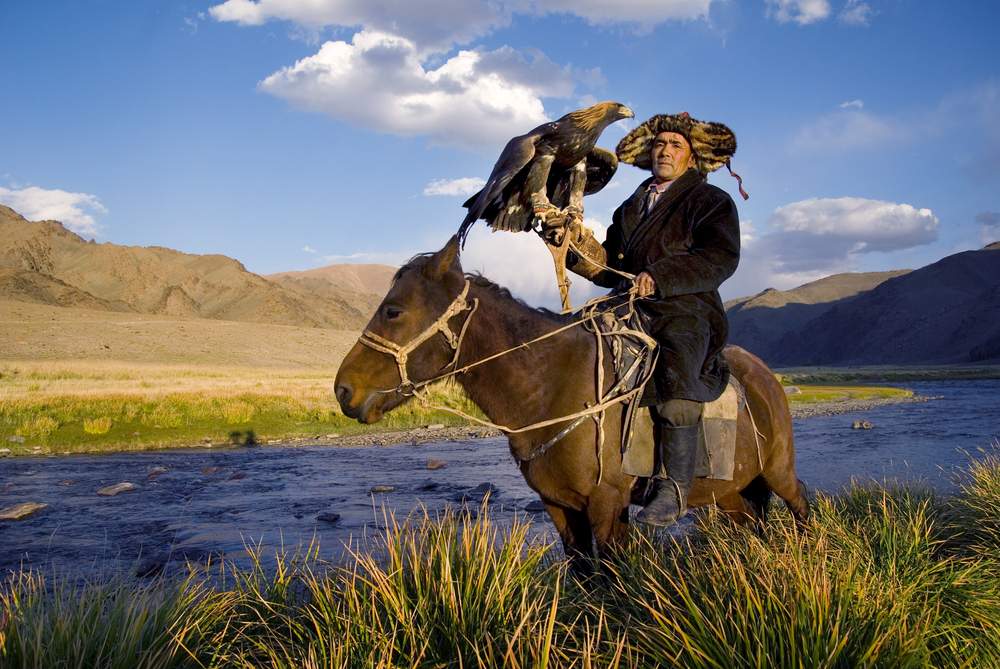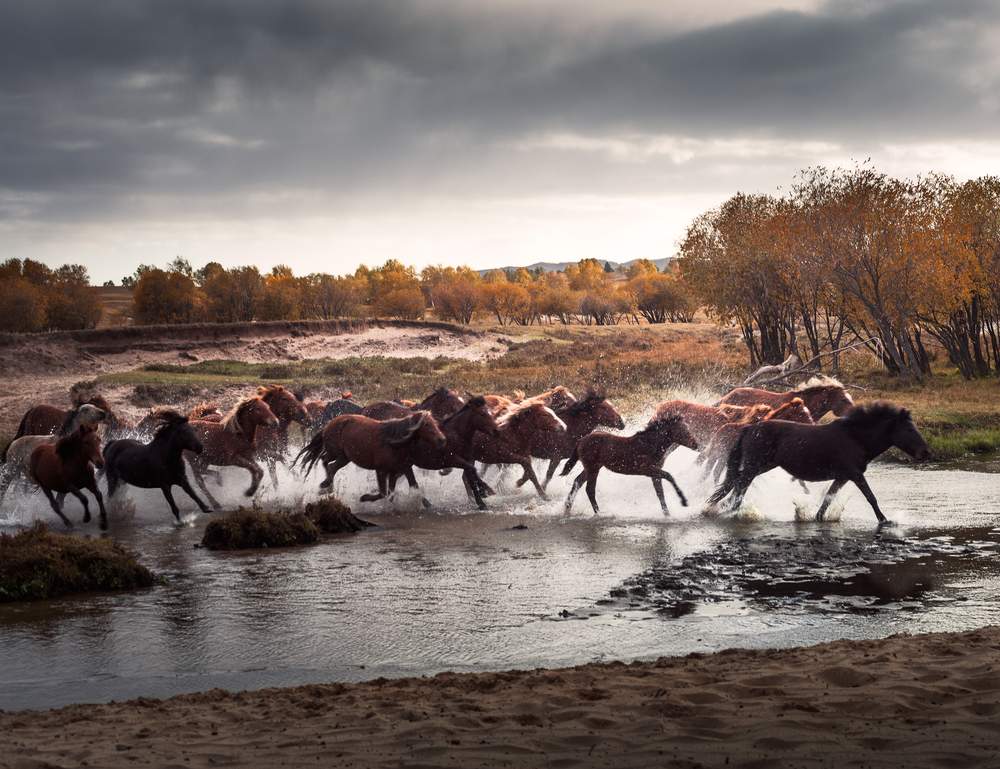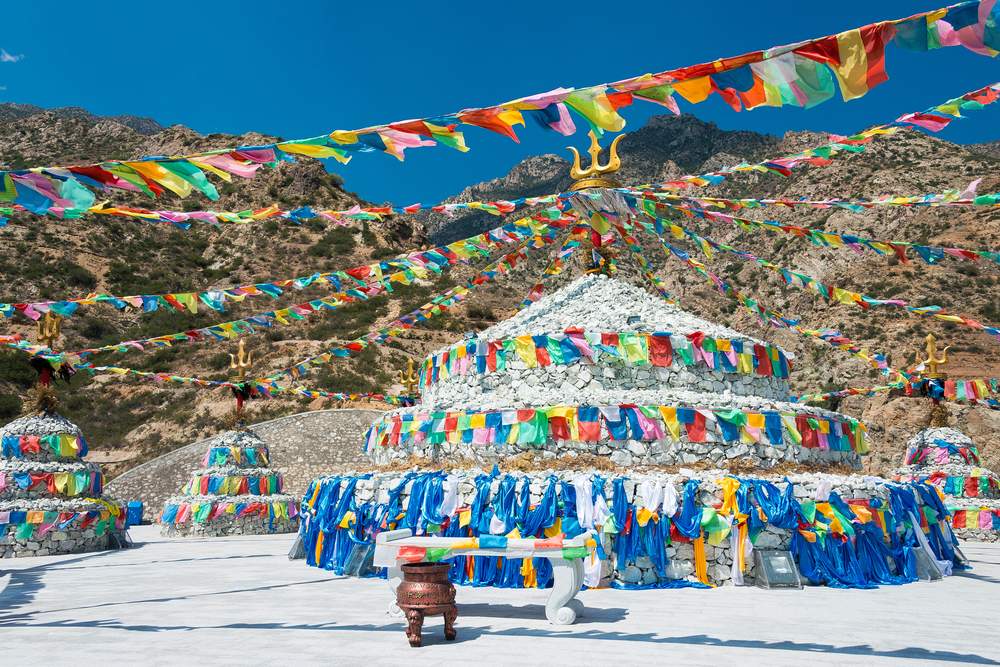Mongolia is an underrated destination, often forgotten by the backpackers of Southeast Asia or those concerned with conquering the behemoth that is China. But Mongolia has much to offer any type of traveler, from exploring the expansive steppes and the Gobi Desert, to meeting the nomadic peoples of the least densely populated country on earth, and though modern development is slowly creeping in, the country remains largely off the mass-tourism trail, giving visitors plenty of opportunity to learn first-hand about the traditional Mongol way of life before it threatens to change.
Here are eight experiences not to miss in Mongolia:
Ulaanbaatar

Ulaanbaatar (or UB as it is known to the local expats) is both the capital and the largest city in Mongolia. Since switching to a democratic, market-based economy twenty years ago, Ulaanbaatar has become the hub for all activity in the country. It is home to the only international airport, the government, the Mongolian stock exchange and the largest monastery in the country, and is the launching point for all the other regions, with most tour companies having offices downtown.
But the business nature of the city should not deceive a traveler into thinking that Ulaanbaatar has no merits of its own. There is the Zaisan monument for those fans of the former Soviet Union, the National History Museum for lovers of Chinggis Khan (or Genghis Khan as most people know him) and the Gandan Monastery for travelers seeking a little enlightenment.
“It combines old and new, Communism and Capitalism, and nomadism and modernism. “
It combines old and new, Communism and Capitalism, and nomadism and modernism. With the continual presence of Chinggis Khan, some chaotic markets and a few nightclubs with enough techno and smoke machines to liven up any party, Ulaanbaatar merits a visit of its own before heading into the rest of the country.
>> Find hostels in Ulaanbaatar
The Mongols (Past & Present)

If you’ve seen pictures of Mongolians, it is likely some smiling face, with a stunning blue sky in the background. They are infinitely friendly, generous and welcoming, especially in the countryside. There is a general philosophy in Mongolia to share what you can, so whenever you step inside the ger, be forewarned that the consumption of either fermented mare’s milk (airag) or fermented camel’s milk might be expected. To be polite, it is only necessary to touch the offered food or drink to your lips, if camel’s milk is not that appealing.
“They are infinitely friendly, generous and welcoming, especially in the countryside.”
The Mongolians of the past are just as interesting as their descendants. The world often forgets about the influence of the Khans, specifically Kublai Khan. He ruled an empire that stretched from China to the fringes of Europe. The effects were not tangible; there are very few monuments, and temples that remain. Instead, talk to locals who still pride themselves on their history, and visit the National History Museum to see the scope of the empire.
>> Book a Mongolia adventure trip
The Gobi Desert

Mongolia has three main types of terrain: steppe, high mountain, and desert. The Southern and Eastern reaches of the country are both dominated by the Gobi Desert, but while similar, each area is also quite different. They both offer stunning landscapes, sand dunes and, of course, the chance to ride camels.
“Mongolia has three main types of terrain: steppe, high mountain and desert.
The South Gobi is better for fossils than the East Gobi (which only offers petrified wood). Museums are now the owners of most fossils but it is equally fun to let your imagination run wild and play archaeologist for a day in the desert. As with most other regions of the country, the Gobi has numerous monasteries and spiritual sites (such as the Khamar Monastery), drawing just as many Mongolian tourists as foreigners to the desert.
Camels & Reindeer

Neither reindeer nor camels are unique to Mongolia but both the camel and the reindeer have been part of life in Mongolia for centuries. Each of these animals is integral to daily life among nomads, and any visitor will participate in daily activities, like milking, or fetching wood. See first-hand how the animals provide cheese, milk, meat and alcohol and are used for the transport of both goods and people. To visit camels, there are both long- and short-term options, whether it’s multi-day treks in the desert or ten minute rides close to the city.
“All of these activities are provided while staying in a yurt with no electricity, miles away from any town.”
If you are more interested in reindeer, homestays are available with the Tsaaten herders of northern Mongolia, where life is slow and you can learn to ride reindeer, make reindeer products (like tools, food and clothing) or generally learn about the lifestyle. All of these activities are provided while staying in a yurt or tipi with no electricity, miles away from any town.
The Great Outdoors

Mongolia is a country made for nature lovers. It has one of the lowest population densities in the world, which equals a lot of open space, ranging from the far northern reaches of Lake Khuuvsgul among forested mountains, to the rolling grassy steppes for which the country is known, to the drifting sand dunes of the Gobi. The common feature among all the landscapes being the consistent blue sky. There are ample opportunities to hike (whether it is in sand dunes, mountain tops or steppes), horse trek, camp and almost any other activity that the outdoors might provide.
“The common feature among all the landscapes being the consistent blue sky. “
Horse trekking is one of the most common options, as Mongolians are known for their adeptness with horses. Much of the time, a traditional Mongolian twist might be thrown in, whether it is staying in gers or visiting the aforementioned reindeer herders. If you are only in the country for a short while, there are multiple national parks that are easily accessible from Ulaanbaatar (such as Terelj National Park) and ger camp accommodation is plentiful.
>> Learn more about top experiences for horse lovers here and around the world
Communist History

Mongolia is an excellent example of Sovietism with an Asian flare. Being sandwiched between the two major Communist powers of Russia and China forced Mongolia to side with one or the other and it chose Russia. That decision is still reflected in present Mongolia; much of the architecture and distinctive qualities of Ulaanbaatar are Communist. There are grey, concrete apartment buildings reminiscent of Eastern Europe and the faces of Marx and Lenin are still common.
“Mongolia is an excellent example of Sovietism with an Asian flare.”
Some of the more notable attractions in the capital city relate to the Communist past, including the Zaisan Memorial, the State Department Store, and the Central Cultural Palace. In contrast to many European states, much of the Communist threads continue to be visible: there are statues to Lenin in downtown Ulaanbaatar, and the main square is named after Sukhbaatar, a great Communist hero. Much of the older generation reveres the Communists because they freed them from the Chinese.
The flip side of the coin reveals what Communism destroyed. Much of the culture and religion of Mongolia was damaged, numerous temples were destroyed, monks killed and people persecuted. The best place to learn about this side of Mongolia is the Memorial Museum for the Victims of Political Persecution.
Spirituality

Most Mongolians are Buddhists and spirituality is very important, even among the younger generations. Any temple is likely to have as many Mongolian tourists as Westerners (if not more) and people will take a 20 hour round trip train ride to visit spiritual centres with good energy in the East Gobi Desert.
“It is not uncommon to see people make daily offerings or to have shrines erected in their homes.”
In the capital, check out Buddha Park, or Gandan Monastery, two stunning representations of the commitment of Mongolians to their religion. Outside of the special sights that the temples and centres present, there is an everyday quality to the spirituality. It is not uncommon to see people make daily offerings or to have shrines erected in their homes.
>> See other spiritual destinations
Festivals

One of the biggest draws for tourists to Mongolia is the annual Nadaam festival in July. It combines some of the most traditional aspects of Mongolian culture in one setting. The traditional sporting competitions of Nadaam are wrestling, archery and horse racing. But if sports are not appealing there are the clothing (Mongolian wrestling wear looks like a speedo and matching bolero) and food (like tsuivan – a traditional noodle stew) aspects.
“Each festival offers a unique view into the Mongolian and other ethnic minority cultures.”
The largest Nadaam celebration happens in Ulaanbaatar but there are festivals throughout the countryside, and the Mongolian festival scene is not limited to Nadaam; there is also the Eagle Festival in October, the Thousand Camel Festival and Mauryz (Kazakh Traditional Spring Festival). Each festival offers a unique view into the Mongolian and other ethnic minority cultures.
Read more about traveling in Asia:







